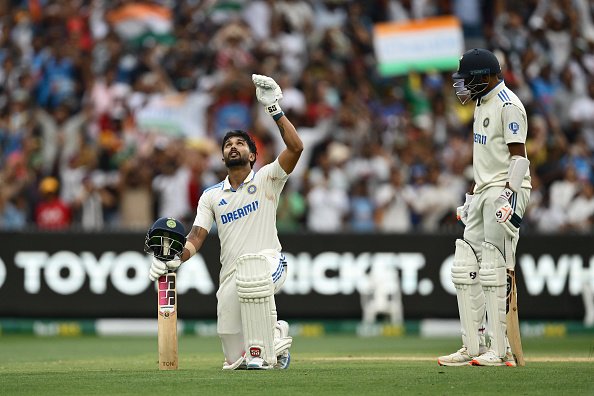
The Panama Canal is one of the most significant waterways in the world, a vital artery for international trade that saves ships thousands of miles on their journeys. However, its management and fees have recently become a subject of international debate, fueled by comments from U.S. President-elect Donald Trump. Here’s a comprehensive look at the canal, its history, and the controversy.
What is the Panama Canal?
The Panama Canal is a 51-mile (82 km) waterway that connects the Atlantic and Pacific Oceans through the Isthmus of Panama. Completed in 1914, it revolutionized global shipping by eliminating the need for ships to travel the additional 7,000 nautical miles (13,000 km) around South America’s Cape Horn. The canal’s strategic importance cannot be overstated:
- Trade Volume: In the year ending September 30, 2024, nearly 10,000 ships passed through the canal, carrying 423 million tons of cargo. These goods include food, minerals, and manufactured products.
- Economic Impact: Over 40% of consumer goods traded between northeast Asia and the U.S. east coast rely on the canal.
- Key Customers: The United States is the canal’s largest customer, accounting for about three-quarters of the cargo transported. China is the second-largest user.
Ownership of the Canal
The Panama Canal is owned and operated by the Panama Canal Authority (ACP), a government agency of Panama. This arrangement has been in place since 1999, marking the end of a long period of U.S. control.
Historical Background
- U.S. Construction and Control: After assisting Panama in gaining independence from Colombia in 1903, the United States took control of the canal zone and began construction. The canal officially opened in 1914.
- Tensions and Transition: U.S. administration of the canal led to tensions with Panamanians, particularly over the exclusion of locals from its operations. Protests erupted in 1964, resulting in the deaths of 28 people. This unrest prompted negotiations to transfer control.
- 1977 Torrijos-Carter Treaties: These agreements, signed by U.S. President Jimmy Carter and Panamanian leader Omar Torrijos, outlined the gradual transfer of the canal to Panama, culminating in full Panamanian control on December 31, 1999.
Since then, Panama has managed the canal independently, reinvesting revenues into its maintenance and expansion.
Why is the Canal Important?
The Panama Canal is a cornerstone of global commerce:
- Efficiency: By cutting travel time and distance, the canal reduces shipping costs and supports international trade.
- Global Reach: It serves as a critical link in supply chains, connecting major markets in Asia, the Americas, and Europe.
- Economic Driver: For Panama, the canal generates significant revenue, contributing to national development and infrastructure.
Trump’s Controversy Over the Canal
Donald Trump, as U.S. president-elect, has raised concerns about the Panama Canal’s management, particularly focusing on its transit fees and strategic importance.
The Panama Canal is considered a VITAL National Asset for the United States, due to its critical role to America’s Economy and National Security. A secure Panama Canal is crucial for U.S. Commerce, and rapid deployment of the Navy, from the Atlantic to the Pacific, and…
— Donald J. Trump Posts From His Truth Social (@TrumpDailyPosts) December 21, 2024
Trump is 100% right!
Jimmy Carter’s surrender of the Panama Canal was a betrayal of American power.
It’s time to take it back! pic.twitter.com/ijbIc0Gkiw
— Samuel Fisher (@samuelffisher) December 22, 2024
Fee Dispute
Trump criticized the canal’s fees as “exorbitant,” claiming that U.S. businesses, the navy, and government are being overcharged. Transit rates have indeed risen in recent years due to environmental challenges:
- Drought Impacts: Severe drought in late 2023 reduced the canal’s capacity, limiting daily transits to 22 ships from the usual 36. This created delays, forcing some ships to wait weeks or pay up to $4 million to expedite passage.
- Upcoming Changes: The Panama Canal Authority plans to increase charges and introduce new fees starting January 1, 2025, to address ongoing operational challenges.
Concerns About Foreign Influence
Trump also expressed fears that the canal could fall into “the wrong hands,” implying that China’s involvement in nearby ports might pose a strategic threat. While a Chinese company controls two of the five ports adjacent to the canal, Panama’s president, José Raúl Mulino, has firmly stated that the canal remains under Panama’s full sovereignty.
Trump’s Threats
The president-elect suggested that the U.S. might retake control of the canal if Panama’s management does not meet his standards. Such a move would mark a dramatic shift in U.S.-Panama relations.
Panama’s Response
President José Raúl Mulino has strongly rejected Trump’s accusations, emphasizing Panama’s sovereignty and the fairness of its transit fees. In a video statement, he declared:
“Every square metre of the Panama Canal and its adjacent zones is part of Panama, and it will continue to be.”
Panama responded to Trump’s tweet about the Panama Canal.
Then Trump responded by renaming the canal with “welcome to the United States Canal”. pic.twitter.com/snYqWnrdM1
— Wall Street Mav (@WallStreetMav) December 22, 2024
Looking Ahead
The Panama Canal remains a critical asset in global trade, but its management faces growing challenges from climate change, increasing demand, and geopolitical tensions. While Trump’s remarks have stirred controversy, Panama appears resolute in maintaining control of this vital waterway.
Conclusion
The Panama Canal’s history is one of transformation—from U.S. construction and control to Panamanian sovereignty. As it continues to play a pivotal role in global commerce, the canal must navigate not only ships but also the complex currents of international politics and environmental pressures. Whether Trump’s criticisms will lead to significant policy changes remains to be seen, but the canal’s importance to world trade is undeniable.
Disclaimer: The views expressed in this article are for informational purposes only and do not constitute an endorsement of any political position or policy.
Also Read: Bangladesh-Myanmar Border Issue: A Comprehensive Analysis
Follow US





